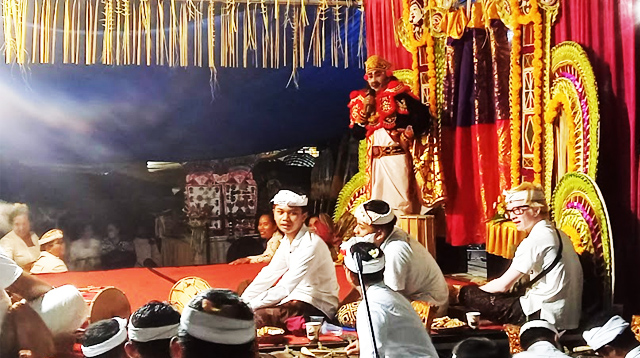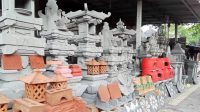AMIDST the lush landscapes and vibrant culture of Bali, Indonesia, lies a traditional performing art form known as “Arja.” This operetta, with its captivating blend of storytelling, music, and dance, has enchanted audiences for centuries.
In this article, we will delve into the mesmerizing world of Balinese Arja operetta, exploring its history, unique characteristics, and enduring cultural significance.
A Glimpse into Arja’s History
Arja has deep roots in Balinese culture and can be traced back to the Majapahit Kingdom (1293-1527), which reigned over Bali and Java in the 14th century. It evolved from the ancient Javanese art form called “Arya.” Over the centuries, Arja absorbed local influences, transforming into a distinctly Balinese tradition.
The word “Arja” itself is believed to have originated from the Sanskrit word “Arya,” which means noble or refined, reflecting the high regard in which this art form has been held.
Unique Characteristics of Arja
- Storytelling: Arja is primarily a storytelling art form, with tales often drawn from Balinese epics, mythology, or local legends. These stories are narrated through sung dialogues, and the performers convey the plot and emotion through their vocal expressions and gestures.
- Music and Instruments: Arja is accompanied by a traditional Balinese orchestra known as “gamelan.” The gamelan ensemble includes instruments like metallophones, gongs, flutes, and drums, creating a rich and melodious backdrop for the performances.
- Dance: Dance is an integral part of Arja, adding visual allure to the storytelling. Dancers, adorned in intricate costumes, perform graceful movements that enhance the narrative and engage the audience.
- Character Roles: Arja operettas typically involve a cast of characters, each representing different aspects of Balinese society and culture. These characters often include kings, queens, gods, demons, and common folk, with elaborate costumes and makeup distinguishing them.
- Dramatic Elements: Arja incorporates dramatic elements, including humor, suspense, and romance. The performances evoke a wide range of emotions, from laughter to tears, as they explore the complexities of human nature.
Cultural Significance
Arja is not merely a form of entertainment; it plays a vital role in preserving and perpetuating Balinese culture and values. Here’s why Arja holds enduring cultural significance:
- Cultural Preservation: Arja serves as a living repository of Balinese stories, customs, and values, ensuring they are passed down through generations.
- Spiritual Connection: Many Arja stories are based on Hindu epics and mythology, reinforcing the spiritual and religious aspects of Balinese culture.
- Community Bonding: Preparing for and performing Arja operettas require collective effort and cooperation, strengthening bonds within Balinese communities.
- Tourism: Arja has become a cultural attraction for tourists visiting Bali, contributing to the island’s cultural and economic prosperity.
Challenges and Preservation Efforts
While Arja continues to thrive in Bali, it faces challenges such as modernization and competition from contemporary entertainment forms. To address these issues, various initiatives have been undertaken, including:
- Cultural Education: Efforts to educate younger generations about Arja, its history, and its significance in Balinese culture.
- Support for Artists: Providing financial and infrastructural support to Arja artists and troupes to ensure their livelihoods.
- Cultural Festivals: Inclusion of Arja performances in cultural festivals to showcase its beauty to a wider audience.
Balinese Arja operetta is a testament to the island’s rich cultural heritage and artistic expression. Its unique blend of storytelling, music, dance, and drama weaves a mesmerizing tapestry that captivates both locals and visitors. As Bali continues to evolve, Arja stands as a timeless symbol of tradition and a testament to the enduring power of cultural expression. By celebrating and preserving this enchanting art form, Bali ensures that the magic of Arja lives on for generations to come.











